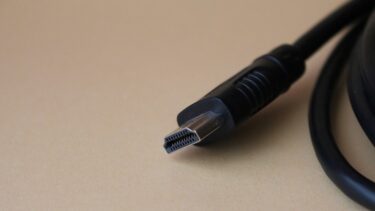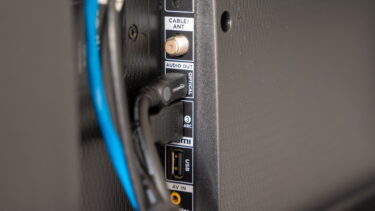We will help you remove the confusion and make it a bit easy to pick the correct cable. But first, you need to know the difference between Thunderbolt and USB-C. Let’s get started.
What Is Thunderbolt
Intel’s Thunderbolt first made its debut in 2011. There have been quite a few iterations till now and Thunderbolt 3 is the latest version. Though the Thunderbolt 3 made a debut in 2015, it arrived at the peak of USB-C creating a rage in the electronics world. The USB-C was looked upon as universal solution for better charging and data transfer. The cause of the confusion of Thunderbolt cable primarily arises from the fact that the USB-C and Thunderbolt cables look quite similar. And indeed, Thunderbolt 3 cables use the same physical interface. The only difference is that the said cables have a small lighting indicator to tell them apart from regular USB-C cables. However, when it comes to speed, there is a huge difference between the two. For one, Thunderbolt 3 is fast and can transmit data at speeds as high as 40 Gbps. Cool, right? As opposed to it, USB-C has a maximum speed of 20 Gbps. Thunderbolt 3 cables have plenty of features to boast about. For one, you can use the same cable to charge your laptop, transmit data or connect your laptop to two compatible 4K Thunderbolt displays. And that’s not all. It’s capable of delivering up to 100W of power and allows you to daisy chain multiple monitors. Again, it’s worth noting that the old Thunderbolt cables do not have USB-C connectors. Instead, the older versions relied on the Mini DisplayPort connector, which limited its adaptability. And due to this reason, the newer Thunderbolt cables are not compatible with devices which older Thunderbolt or Thunderbolt 2 directly.
1. Anker Thunderbolt 3.0 Cable
The folks at The Wirecutter tested this cable and found it to meet the standards mentioned above. When connected to a Thunderbolt 3 compatible port, it has a read speed of 2,131 MB/s and a write speed of 924 MB/s on average. However, it’s not one of the strong and durable products out there. If you have plans to plug/unplug it often, we’d recommend skipping this product. Why should you pick it: If you are looking for an affordable option that lets you reap all the advantages of Thunderbolt 3 cables, this one is the one.
2. Nekteck Active Thunderbolt 3 Cable
The highlight of this cable is the length of the cable. At 6.6ft, the cable gives you enough wriggle room to set up your system as per your preference. It’s versatile and works well across systems, be it connecting your laptop to an eGPU or a docking station like the CalDigit TS3 Plus Dock. Naturally, this cable costs a little more than its counterpart above. Why should you pick it: Nekteck cables are praised for their quality and durability, and this one is no different. The build is solid and will likely last you a long time.
3. Belkin Thunderbolt 3 Cable
The Belkin cables handle most of the functions well. It can be used as a humble charging cable, or you can amp up your experience with multiple daisy-chaining monitors. The folks at Mac Sources tested this cable and found it to have an average write speed of 1852.9 Mbps and read speed of 2363.2 Mbps. Why should you pick it up: The Belkin cable is a well-made cable and is built to last a long time. It proves to be a good buy if you do not want to compromise on the performance of your devices.
4. Apple Thunderbolt 3 Pro Cable
Simultaneously, the length is pretty long, making it convenient for you to set up your setup without any connectivity issues. Performance-wise, it does things to the T. Like many Apple products, this one is a premium product, and you will have to shell out a considerable sum for it. On the bright side, it does the job as advertised. Why should you pick it up: The nylon braiding will prolong the cable’s life, and the solid build ensures that the cable will likely last you a long time. Add premium experience to the list, and you have got an almost perfect recipe.
Grab the Thunder
Perhaps, the best thing about Thunderbolt cables is that they can easily double as USB-C cables, and that’s a huge plus, especially when it comes to reducing cable clutter on your desk or drawer. Just remember to unplug the cables while gripping the connector. The above article may contain affiliate links which help support Guiding Tech. However, it does not affect our editorial integrity. The content remains unbiased and authentic.













![]()